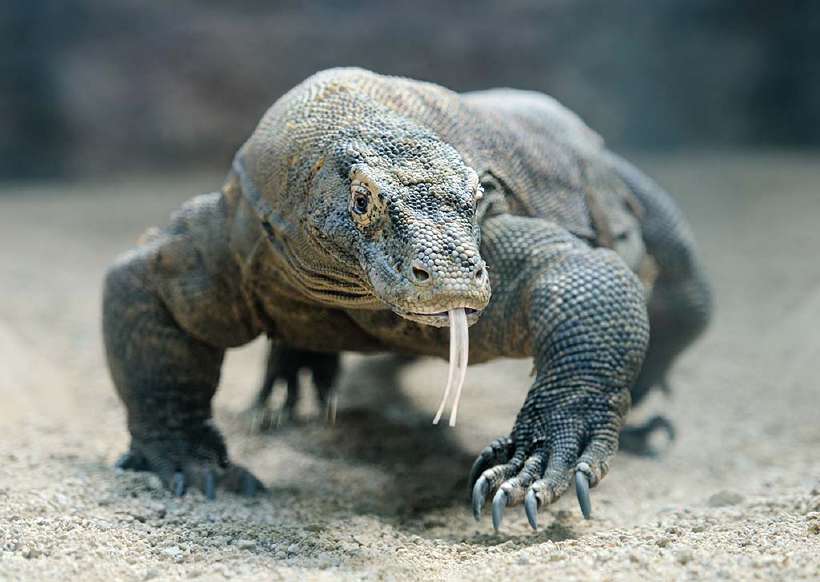What are Komodo Dragons?
Home / Science for Kids / 5Ws & H For Kids / What are Komodo Dragons?
European mythology abounds in stories of knights in shining armour battling fearsome dragons. Fairytale storybooks are peppered with illustrations of these huge monsters looking like crocodiles with wings and huge claws and breathing fire. Of course fire breathing dragons do not exist, but there is a tiny island, called Komodo, in Indonesia, that is home to dragons – yes, real dragons!
Unlike the dragons of yore, the Komodo dragon does not possess a fiery breath, nor can it trample hapless humans underfoot, but it does pack a mean bite. This ‘dragon’ has a forked tongue that constantly flicks in and out (just like that of a snake). And just like a snake, when provoked the Komodo dragon does administer a lethal bite.

The Komodo’s mouth contains toxic bacteria that fester on wounds. So once the lizard bites, the bacteria (from the lizard’s mouth) do not let the wound heal; and the victim dies within a few days. In addition to its deadly bite, a Komodo also has extremely stubby and powerful legs and its tail can deliver a crushing blow to an opponent.
The Komodo dragon is known as the Ora in Indonesia. Oras are good swimmers and the Indonesians also call them water crocodiles as they are excellent swimmers! More than 10,000 years ago, oras were also found in Australia. These Australian dragons (known as Megalania) were far larger than the present day Komodo dragon! In fact a megalania was twice as long as a Komodo dragon and at least five times heavier.
Komodo dragons are also found in fewer numbers on two other Indonesian islands – Flores and Rinca. This unusual animal was discovered during the First World War (1914 -1918) when a plane crashed in the Indonesian waters. The pilot survived and swam to a nearby island. Much to his horror, he discovered that giant monsters inhabited the island. Luckily, he was able to radio home and was eventually rescued. When he first told his stories of the ‘giant lizards’ people scoffed at him.
Komodo dragons may be very different from the dragons in fairytales, but they do enjoy the distinction of being the world’s largest lizards. They belong to the family of the oldest living lizards, known as monitors and are closely related to an ancient 33 feet long reptile, called the mosasaur that lived about 100 million years ago. While Komodo dragons are nowhere as large as their forefathers, they are known to weigh over 130 kilograms and grow up to 10 feet in length.
Adult Komodo prey on goats, deer, young buffaloes, horses – and sometimes, even humans. This huge lizard is capable of gobbling prey up to 15 times its size and can eat as much as 80 percent of its weight in a single meal. A really hungry Komodo dragon has the ability to shift its jaws to swallow food larger than its head. These lizards are also cannibals – that is, they are known to eat other Komodo dragons, including babies and eggs.
Female Komodo dragons lay eggs in underground burrows and these eggs hatch after an eight-month incubation period. Parents are not bothered about their offspring; as a result baby dragons are forced to fend for themselves. Newly hatched baby Komodo dragons immediately scurry off to sheltering trees and they spend the initial part of their lives trying to avoid predatory adults!
Did you know that the smallest lizard in the world is the Sphaerodactylus parthenopion, measuring 0.70 inches and found only in Virgin Gorda in the British Virgin Islands!
630 words |
6 minutes
Readability:
Grade 9 (14-15 year old children)
Based on Flesch–Kincaid readability scores
Filed under: 5ws and h
Tags: #bacteria, #lizards, #dragon
You may also be interested in these:
How are Earthquakes Recorded?
What is Ribotyping?
The Cool and Cunning Lark
How does the Lotus Flower Clean itself?
A Lizard that Squirts Blood from its Eyes